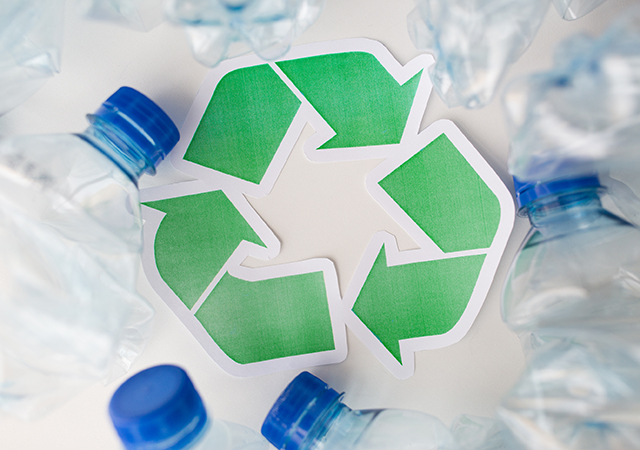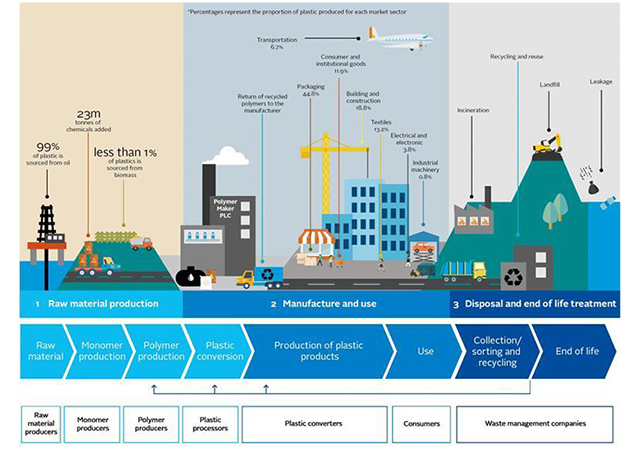

The plastic recycling industry was worth $45.5 billion in 2023 and is projected to grow at a Compound annual growth rate (CAGR) of 9.3 per cent to reach $129.5 billion by the end of 2035, according to Transparency Market Research.
This growth is driven by ongoing improvements in recycling technologies, such as chemical and pyrolysis processes, which allow for the recycling of plastics of all types, including mixed and contaminated ones. These advancements are expected to increase recycling rates and improve the quality of recycled materials.
MITIGATING THE ENVIRONMENTAL IMPACT OF PLASTIC WASTE
Plastic, a versatile and affordable material, has become ubiquitous in modern life. However, the issue of its end-of-life disposal has become a significant concern. Over the last 70 years, nearly half of the world's used plastic has been landfilled or dumped, with only 10 per cent being properly recycled. Annually, about 0.5 per cent of global plastic waste enters the oceans, causing significant environmental harm.
Plastic recycling has become a crucial process in mitigating the impacts of plastic waste on the environment. The industry's growth is essential in addressing this pressing issue.
INCREASING ADOPTION OF RECYCLED PLASTICS IN INDUSTRIAL APPLICATIONS
Leading market players are highlighting the trend of increasing recycled plastic usage in industrial applications, such as the automotive, packaging, and construction industries. This shift is driven by the desire to save on costs and reduce carbon footprints.
For example, the automotive industry uses recycled plastic for parts and components, while packaging and construction industries prefer it for boxes, bags, containers, and building materials. Consumer products like water bottles, eco-friendly sneakers, and outdoor furniture are also being made from recycled plastic.
ADVANCEMENTS IN RECYCLING TECHNOLOGIES
While various recycling techniques exist, the traditional methods often result in limitations due to property variations in recycled plastic. This has driven the advancements of chemical technologies like pyrolysis, which promise a more promising future for plastic recycling.
FAVORABLE REGULATORY POLICIES DRIVING THE INDUSTRY
Favorable regulatory policies are also driving the growth of the plastic recycling industry. For example, Europe aims to recycle about 55 per cent of plastic packaging waste by 2030 through improved practices, increased infrastructure investment, and extended producer responsibility. Governments' proactive approach is evident in the growing investments in recycling infrastructure and technology for better efficiency and effectiveness.
REGIONAL TRENDS: ASIA PACIFIC AND EUROPE LEAD THE WAY
Over the past 20 years, plastic recycling has grown significantly, especially in Asia Pacific and Europe. China and India have been crucial contributors to this growth in the Asia Pacific region.
Increasing consumer demand for sustainable packaging and products could make recycled plastics a more valuable raw material, resulting in increased investments in recycling infrastructure. Governments worldwide may implement incentives and regulations to reduce plastic waste and promote plastic recycling, such as strengthening recycling targets, implementing extended producer responsibility programs, and promoting the use of recycled materials in products.
KEY DEVELOPMENTS IN THE PLASTIC RECYCLING MARKET
- In February 2023, Kuusakoski announced the opening of Finland's first facility for processing composite materials, investing over 4 million euros with the support of Business Finland.
- In December 2023, Novolex introduced a food packaging container made from 10 per cent recycled plastic, expanding its recycled product line and reinforcing the circular economy.
With numerous players present, the global plastic recycling market is highly fragmented, and manufacturers are undertaking significant research and development activities to drive innovation in the industry.

